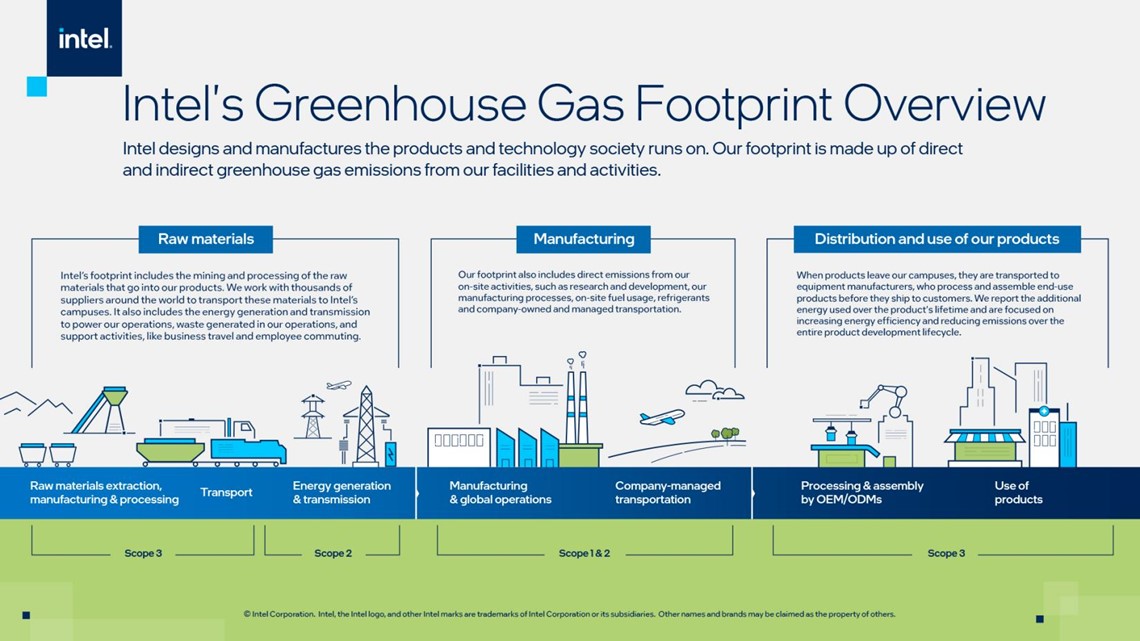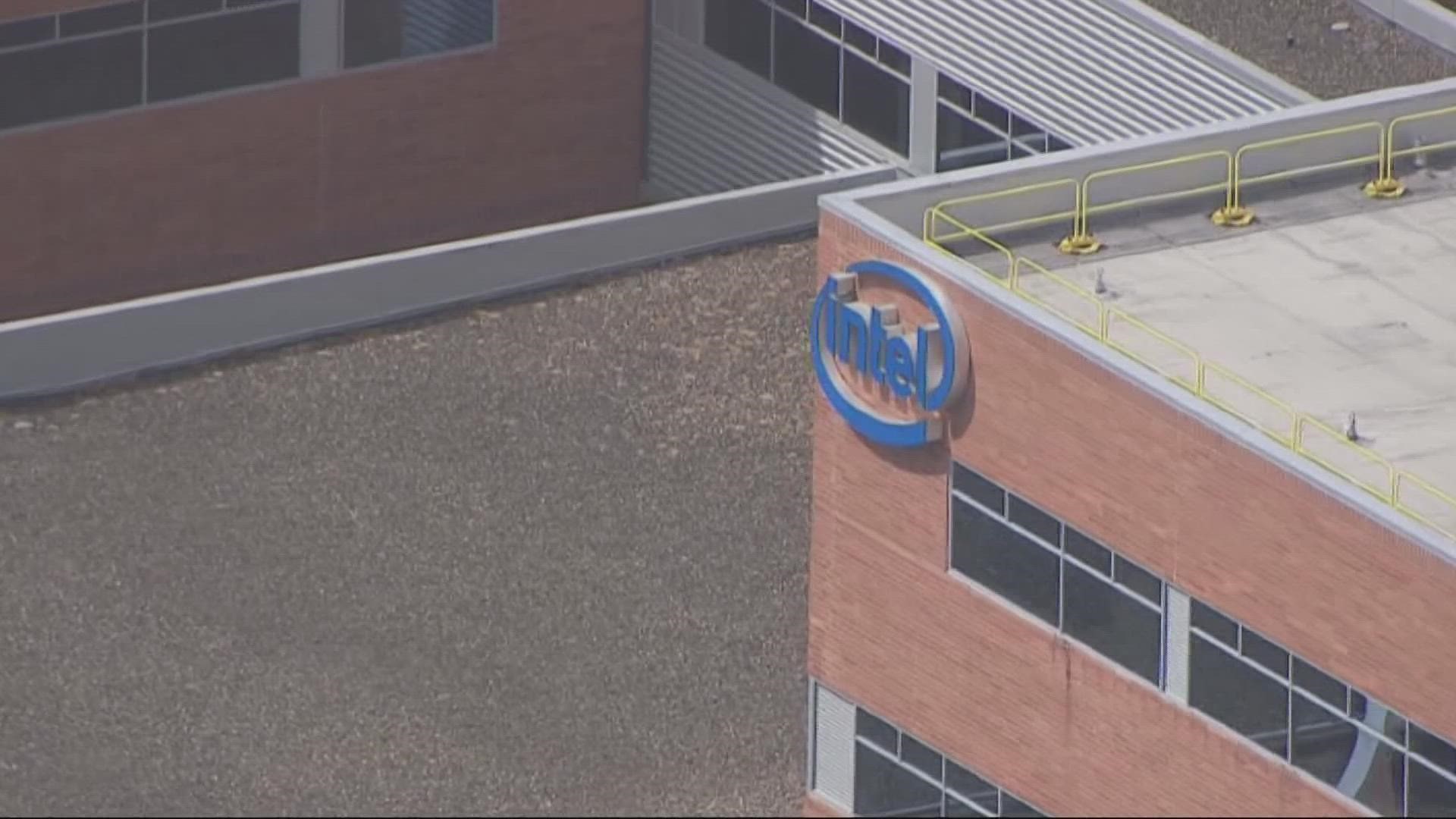HILLSBORO, Ore. — Intel is pledging to achieve net-zero carbon emissions by 2040, reducing its footprint across the chain of operation.
The tech company has its biggest campus in Hillsboro and is Oregon's largest corporate employer.
CEO Patrick Gelsinger was in Oregon Monday for the Grand opening of Mod3, a new semiconductor factory expansion of Intel's D1X facility.
"Every aspect of human existence is becoming more digital. Everything digital relies on semiconductors," Gelsinger told the crowd. "We need innovation, we need manufacturing."
On Wednesday, Gelsinger was part of an even bigger announcement online.
"We are committing to reach net-zero greenhouse gas emissions across our operations by 2040," he said in a video statement.
Intel acknowledged the challenge of this goal.
"This will not be easy," Gelsinger said.
Intel detailed the chain of its own greenhouse gas footprint, from mining and transportation of raw materials for computer chips, to electricity used in manufacturing, to distribution of products.


Intel is the state's largest corporate employer. The state Department of Environmental Quality (DEQ) noted Intel is Oregon's seventh largest emitter of greenhouse gases, excluding electric utilities.
"The impacts of climate change are an urgent global threat," Gelsinger said in his video statement. "We can do more."
To meet Intel's 2040 net-zero emissions goal, it said it is developing more efficient factories and ways to use greener chemicals in manufacturing. It added it would also hold suppliers to higher environmental standards.
In addition to the carbon metric, Intel is pushing to have net positive water use and 100% renewable energy use globally by 2030.
"The idea that we can be completely moving to renewable energy is something Intel is driving forward," Sen. Jeff Merkley said at Monday's event.
Intel is one of several big technology companies that have made similar climate promises.
Microsoft, Amazon, Apple, Meta (Facebook) and Google have all pledged significant carbon emission reduction or elimination in the next 10-20 years.

